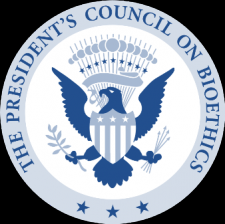Interview: “Democratic deliberation” and bioethics
By Nelson Michael & Xavier Symons,
BioEdge
| 06. 08. 2016
With an election round the corner, the Presidential Commission for the Study of Bioethical Issues is coming to the end of its term. The Commission recently released its final report, entitled Bioethics for Every Generation: Deliberation and Education in Health, Science and Technology. The report discusses the complexities bioethical decision-making in an age of deep ideological disagreements and rapid biomedical progress. The Commission members are optimistic, suggesting that agreement can be reached on substantive bioethical policy matters through processes of “democratic deliberation”. The report proposes an ambitious educational program to improve the bioethical literacy of the public, and also outlines a series of civic virtues that policy stakeholders should adopt when debating ethical issues.
Last week Xavier Symons, of BioEdge, conducted an email interview with Col. Nelson L. Michael, MD, PhD, about the report and the future of bioethics in the United States. Col. Michael is a PCSBI member, and also Director of the U.S. Military HIV Research Program at Walter Reed Army Institute of Research.
******
BioEdge: Hillary Clinton and Donald Trump are the likely candidates for the...
Related Articles
By Megan Molteni and Anil Oza, STAT | 10.07.2025
For two years, a panel of scientific experts, clinicians, and patient advocates had been hammering out ways to increase community engagement in National Institutes of Health-funded science. When they presented their road map to the NIH Director Jay Bhattacharya last...
Paula Amato & Shoukhrat Mitalipov
[OHSU News/Christine Torres Hicks]
On September 30th, a team of 21 scientists from Oregon Health & Science University (OHSU) published a significant paper in Nature Communications, with a scientifically accurate but, to many, somewhat abstruse headline:
Induction of experimental cell division to generate cells with reduced chromosome ploidy
The lead authors were Shoukhrat Mitalipov, recently described here as “a push-the-envelope biologist,” and his long-term colleague Paula Amato. (Recall that in July the pair had co-published with...
By Pam Belluck, The New York Times | 10.17.2025
Before dawn on a March morning, Doug Whitney walked into a medical center 2,000 miles from home, about to transform from a mild-mannered, bespectacled retiree into a superhuman research subject.
First, a doctor inserted a needle into his back to...
By Julia Black, MIT Technology Review | 10.16.2025
Consider, if you will, the translucent blob in the eye of a microscope: a human blastocyst, the biological specimen that emerges just five days or so after a fateful encounter between egg and sperm. This bundle of cells, about the size of...




